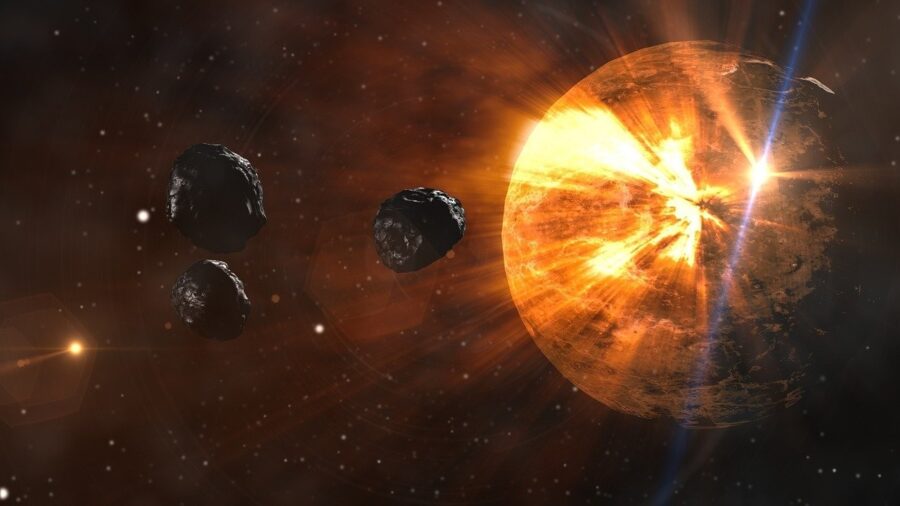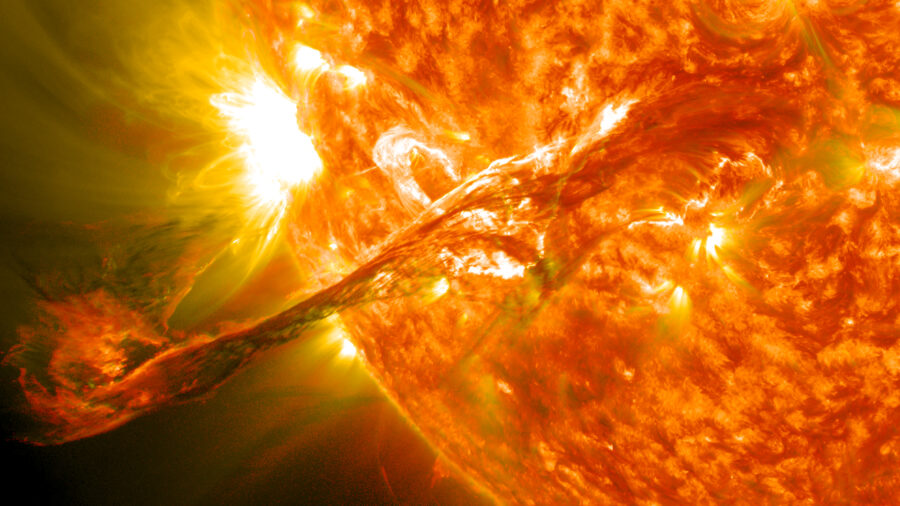The Biggest Comet Ever Is Headed Towards Our Sun
Because it’s the biggest comet ever, it’s able to withstand the heat of the sun and maintain its physical composition as it's impacted by the gravity of other space objects it passes by.
This article is more than 2 years old

Two scientists accidentally stumbled upon one of the largest astronomical discoveries in history — quite literally speaking. The Bernardinelli-Bernstein Comet, named after the duo who discovered it, is said to be the biggest comet ever and it is already giving the scientific community cause for immense excitement on its journey to our solar system. For those who are wondering if the comet poses any danger to Earth or the sun, the answer is “no” — or at least, not at the moment. In fact, astronomers believe, having studied its trajectory, that its current course toward Earth’s sun is actually just the latest trip it’s making, having likely passed by some 500 million years ago. While it may have been a bit bigger then thanks to the sun heating it up, it still marks the biggest comet ever to be observed by those here on Earth.
In fact, because of its size as well as its distance from the sun, one scientist described it as a living time machine. Sadly, that means something different for scientists. While we’re all thinking about taking a DeLorean back through time to steal credit for Chuck Berry’s music, astronomers are considering what the biggest comet ever, officially dubbed C/2014 UN271, can show us about the creation of the universe.
What became dubbed as the biggest comet ever was first observed by Gary Bernstein and Pedro Bernardinelli peeking out of a vast cloud of icy objects more than 2 billion miles from Earth. Comicbook notes that current estimates place the size of the comet at about 85 miles in diameter, or roughly 15 Mount Everest’s “smashed together.” Because of its size, The Daily Beast reports that scientists are encouraged that its physical and chemical makeup remains relatively the same since the early creation of the universe, meaning they can learn more from this than even the Hale-Bopp comet that measured about 37 miles in diameter.
Because it’s the biggest comet ever, it’s able to withstand the heat of the sun and maintain its physical composition as it’s impacted by the gravity of other space objects it passes by. In addition, it flies in a relatively cold orbit, which further preserves what scientists can learn from observing it when it passes as close to Earth as it’s going to get in 2031 — right between the orbits of Uranus (no jokes, please) and Saturn.

While scientists sit around figuring out the best way to use the next decade to prepare to observe this literally massive scientific discovery, people on Earth can be inspired by the story of how Bernstein and Bernardinelli made their discovery. It turns out the best way to find the biggest comet ever is to not set out to do so. According to Space.com, the duo stumbled upon the biggest comet ever completely by accident while doing research on a totally separate hypothesis. They were trying o research an entirely different type of outer solar system object, trans-Neptunian objects. They are described as hunks of rock that circle the sun but remain out beyond Neptune’s orbit (about 93 million miles from Earth’s average distance from the sun).
While they found 800 of those, they were also smart enough to recognize that they found the biggest comet ever and their names will now be synonymous with an entirely different astrological field of study than they set out to explore. It just goes to show you that intelligence and a willingness to accept the universe’s supply of awesome in the many forms it takes are what scientific discovery is all about.











